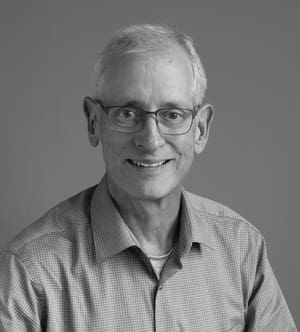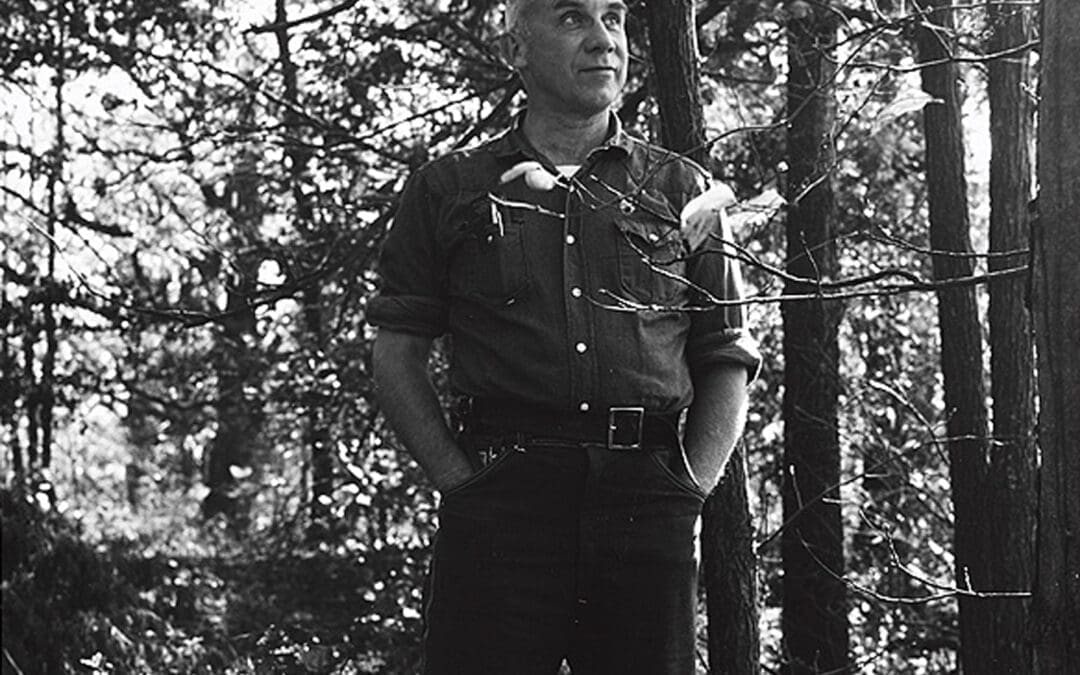Inspired by the interviews in the Paris Review and Bomb magazine, “The Questions” in Sports Illustrated, and the regular interviews on the blogs of Tom Peters and Guy Kawasaki, Comment has asked a diverse group of mentors for their stories.
Comment: How would you explain what you do to an interested nine-year-old child?
David Greusel: As an architect, I draw the designs for buildings before they are built. That way the people who are building the building know what to build. My work is to come up with the plans for buildings. In nearly thirty years, I have designed a lot of buildings of nearly every type imaginable: schools, churches, stadiums, and grocery stores, to name a few.
Comment: What first drew you to this work?
DG: I can remember as a kindergartener playing on the floor with wood blocks. Adults around me would look at the things I built and say, “He’s going to be an architect, isn’t he?” I didn’t know what an architect was, but it sounded like fun.
Later, in high school, I found myself building models of buildings for my own amusement. So the choice of architecture for a college major seemed fairly obvious. Though I have dabbled in writing and theater work since then, it’s clear to me that I have always been called to be an architect.
Comment: As a novice, what were your most valuable learning experiences?
DG: When I first graduated, I worked for a small firm in Wichita, Kansas, that employed six people most of the time I was there. What was invaluable for me was being in the same room as the other architects, all of whom, of course, had more experience than I did. I would overhear their conversations, their phone calls with contractors, and their casual questions to each other (“Does two-by-four cabinet blocking go horizontally or vertically?”). I have often said that the two and a half years I spent in this small office were my real architectural education. It was definitely the reason I passed the architectural licensing exam on my first try.
Comment: What is the best advice you’ve ever been given?
DG: Apart from Scripture, I think it would be never to make the same mistake twice. It is indisputably human to make mistakes. But to make the same mistake over again means that you’re not learning anything.
Comment: From what sources do you draw inspiration for your work?
DG: Because my current work requires me to design in many different cities, I try to learn as much as I can about the culture, history, and architectural traditions of a place before I start designing there. In the best case, I spend one or several days just walking around a new city, trying to get a feel for it, before I ever set pencil to paper. I am inspired by the builders who have come before me. I want to know why they made the choices they did, why they used the materials they did, and what they were trying to create in their community so that my addition to the city will be part of a continuing conversation, not an architectural one-liner.
Comment: What rituals and habits structure your workday?
DG: It would be nice to be able to answer that I spend the first half hour of every work day sharpening my colored pencils, but that would be untrue. One of the things I love about my work is that there is no such thing as a “typical day.” Frequent travel of course creates immense variety in my days, but so also does the number of projects I have worked on, and the myriad of people I have met and worked alongside in doing all those projects over the years. So apart from drinking hot tea and responding to email, my work day has very little about it that is either ritual or habitual.
Comment: What are your favorite tools?
DG: I haven’t loved a computer since I stopped using a Macintosh at work in 1993. There is a long sad story about Apple’s inability to penetrate the architecture/engineering market which could be the subject of another essay. Nevertheless, I use all of Microsoft Office (Word, Excel, PowerPoint and Outlook) quite heavily and in about equal measure. Google SketchUp is a wonderful software tool for quick three-dimensional visualization.
What I really love is drawing freehand. I prefer to draw in ink, using both a black Pilot V Extra-Fine Razor Point and a black Pentel Sign Pen. I prefer to draw on white rolled sketch tissue, which goes by a number of unsavory nicknames. And I often color my drawings with felt-tip markers, of which I have found Chartpak AD markers to be by far the best. Prismacolor coloured pencils are a joy to use, as well.
Comment: Tell us about a project that delighted you.
DG: I think the project that has given me the greatest delight is PNC Park, the home of Major League Baseball’s Pittsburgh Pirates. This was a project where I loved the city I was working in, loved the site that had been selected, and really enjoyed working with the team officials who were involved in the process. Over the course of the project, they came to trust me as a designer, and that trust is the most valuable thing an architect can have.
So not only was working in Pittsburgh and working for the Pirates enjoyable, but the way the project turned out was also a delight. Of course, I could show you any number of spots in the finished project that could have been designed or executed better, but the overall project exceeded everyone’s expectations. Watching the sunset reflect off Pittsburgh’s skyline across the Allegheny River while attending a game on a summer evening is a sublime experience. I am still thrilled when I have the chance to visit Pittsburgh and see the ballpark.
Comment: How do you plan your work?
DG: As much as we like to romanticize the image of the lone architect sketching on a pad, architecture in practice is hugely collaborative and involves a great deal of planning. Project planning involves the allocation of staff resources to particular projects as they flow through the office, and there is a dynamic quality (fewer people at first, more as the project matures) to that flow which takes some doing to manage. Additionally, we have to coordinate the involvement of many engineering consultants, bringing them into the project when there is enough of a design to talk about, but not before the design is too far along. Collaboration and planning are a huge part of how architecture works in the real world.
Comment: How does your work connect to other aspects of your life?
DG: First of all, I feel called to be an architect. This has taken some time to acknowledge, having spent many years in a dualistic Christian culture where secular work was thought to be less significant than full-time Christian service. I now see that working as an architect is full-time Christian service, at least in my case. It’s just not what we normally think of as “ministry.” Though of course it is ministry as well.
I have also come to believe that the idea of achieving “work-life balance,” as it is referred to in the Human Resources departments of large companies, is a myth. I don’t cease to be an architect when I go home at night any more than I cease to be a husband and a father when I leave home for work. I have been trying very hard to de-compartmentalize my life the past few years. I want to be a whole person, who is husband and father and architect and citizen twenty-four hours a day, attempting to order my various responsibilities so that I can discharge them well. But I think the notion that what results is a “balance” between work and family and community commitments is absurd. It is more like a well-rigged sailing ship, where keeping the lines in proper tension results in moving briskly across the ocean to your intended destination. My life is at least as complex as a three-masted schooner, and that requires making constant adjustments to keep the lines in the proper tension, neither too taut nor too slack.

